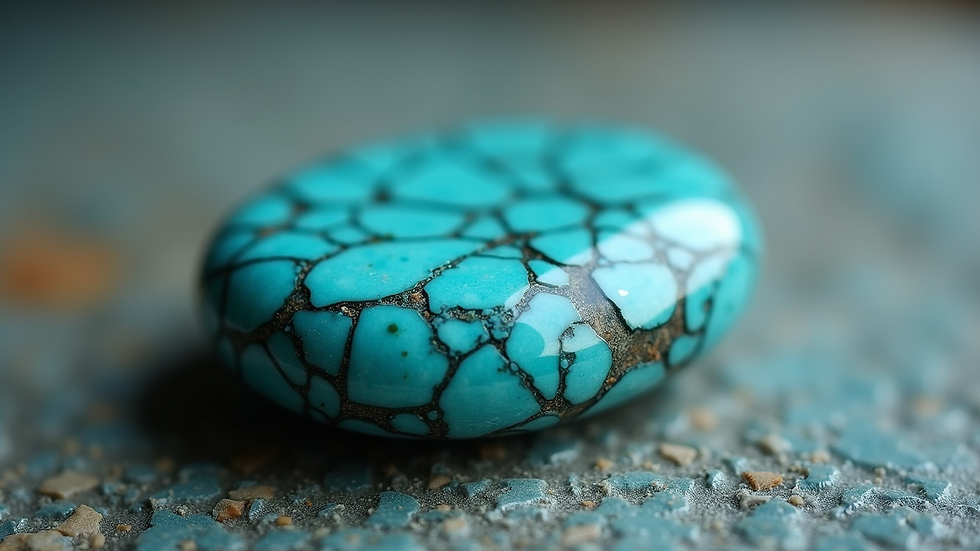The Value Of Turquoise
- Feb 15, 2021
- 4 min read
Updated: Oct 12, 2021
Never confuse price and value. Price is determined between a willing buyer and seller in an open market transaction. Value is more closely tied to cost of production. At any given time, price may be either under or overvalued or fairly valued depending on market factors largely determined by supply and demand but also influenced by external forces including fear and greed.
Turquoise is by any consideration undervalued. In 1910 the average price for high grade turquoise was $15 per carat. In todays dollars that would be over $300. Yet today only the rarest and highest-grade turquoise may achieve that price with most natural very high grade, or gem grade, selling for a fraction of that price. This is due to inefficiency in the market and the existence of a two-tier market where inexpensive treated turquoise, injected with plastic, sells for as much as a hundred times less than the finest most rare natural turquoise that is perhaps the rarest of all precious gems. Because the market for inexpensive jewelry using treated turquoise dwarfs that of high-grade turquoise used in the finest hand made Indian jewelry, there is insufficient demand to support the true value of the finest turquoise and it remains extremely undervalued and one of the greatest values in the rare gem marketplace.
Let us look at some examples. Bob Brucia of Nevadagem is one of the most well-known and respected turquoise dealers in the world. On his web site the following cabochon of Bisbee turquoise sold for $6 a carat. This would be considered the price for a high mid-grade to low high grade example of natural Bisbee.

Photo Nevadagem.
Next let us compare a cabochon of natural Bisbee sold by Bob on his Nevadagem web site that sold for $60 a carat, ten times the price of the preceding example. It is clear that this cabochon has a deeper color and there is a depth of contrast between the turquoise and the underlying matrix. Since these cabs both sold to willing buyers there was obviously some discernment that the more expensive stone deserved the higher price.

Photo Nevadagem.
Finally, let us compare these previous examples with turquoise that would be considered, by most experts, to be the highest grade of Bisbee. There is a radiance that emanates from the stones with a wonderful symmetry of host rock and turquoise. The color is exemplary of what is known as "Bisbee Blue". The stone speaks with a vibration communicating some inner essence, the elusive Zat. This is why turquoise has been part of Native American ceremony and favored in their jewelry.

Photo Arland Ben.
These stones would be priced at between $100-$120 a carat or a premium of twice that of the other very high-grade stone in our example. While many may consider this price prohibitive, think of the alternative with regard to value. The Bisbee mine is no longer providing any turquoise and quality of this grade is very difficult to find at any price. When there is no new supply price is very influenced by demand and any increase could result in immediate and significant price increase.
It is said that beauty is in the eye of the beholder and the extreme price difference between low grade chalk turquoise that has been treated with plastic infusion, and may sell for as low as under a dollar a carat, and the finest most rare gem grade turquoise that comprises as little as 0.1% of all turquoise mined, is a good example of this maxim. Yet even allowing for lack of discernment and appreciation for aesthetic value, the so called Zat of the finest turquoise, it is apparent that over time the underlying influence on price by the market factors of supply and demand will bring higher turquoise prices assuming constant demand.
Turquoise is becoming ever more difficult and expensive to bring to market and as existing hoards are absorbed into the market thus reducing supply, prices will rise. Even at the low end of the market chalk turquoise is difficult to find and producers are resorting to the use of compressed mineral block, often dyed, and synthetic turquoise to meet the demand for inexpensive jewelry much of which is manufactured overseas.
Even expensive consumer items will use treated turquoise because of the ability to have consistent product. Rolex watch company has developed a line with a turquoise face. One may imagine with a watch selling for tens of thousands of dollars that the finest high grade turquoise would be used. In practice Rolex chose treated product because that was the only way they could keep the appearance constant along the entire production and know they would have turquoise available for production. Compressed block provides the ability to have consistent turquoise for a range of products.
For those who understand and value the unique beauty and power of high-grade natural turquoise included in the finest Native American jewelry by artists who deeply value and revere this sacred stone, the price for high grade turquoise may represent one of the true bargains of all times.
Mike Ryan II


Thanks Dan. Kudos to you for the first comment on one of our articles.
These are all such good stories! What a treasure you’re giving all of us.
I would love to start a dialogue about this and other posts. Log in in order to make comments.